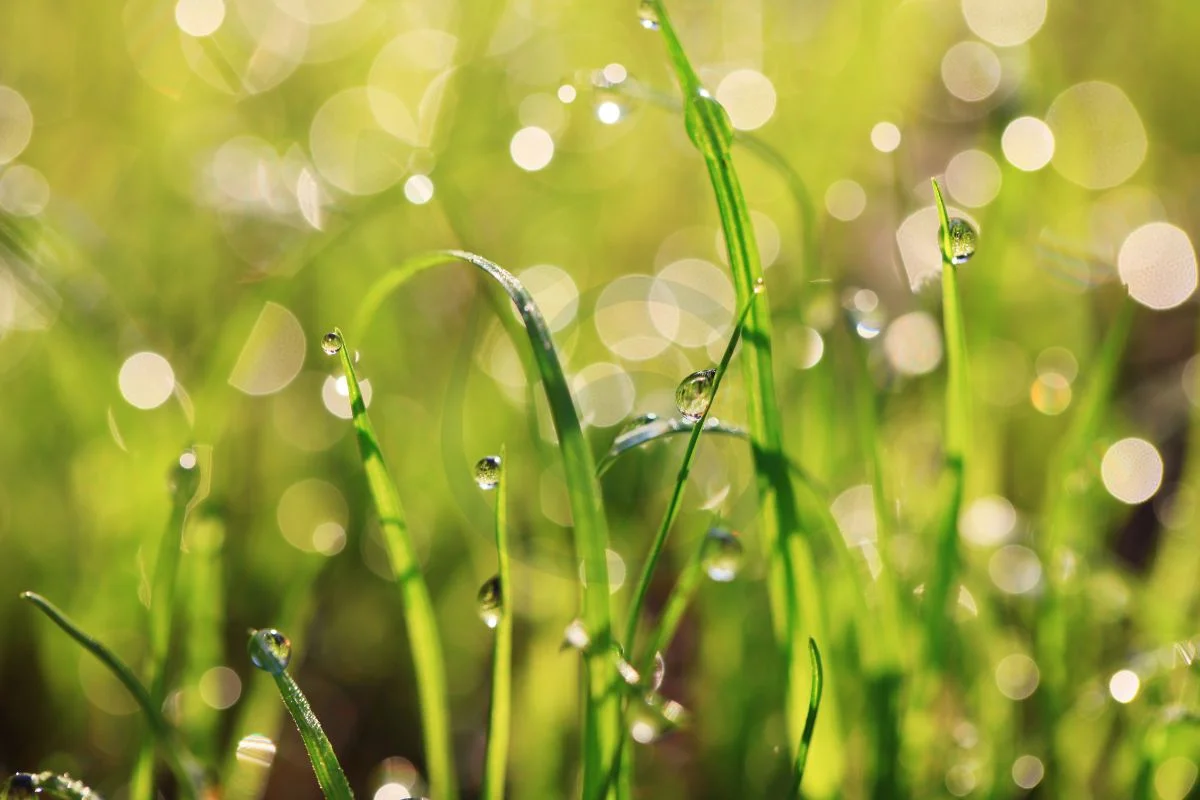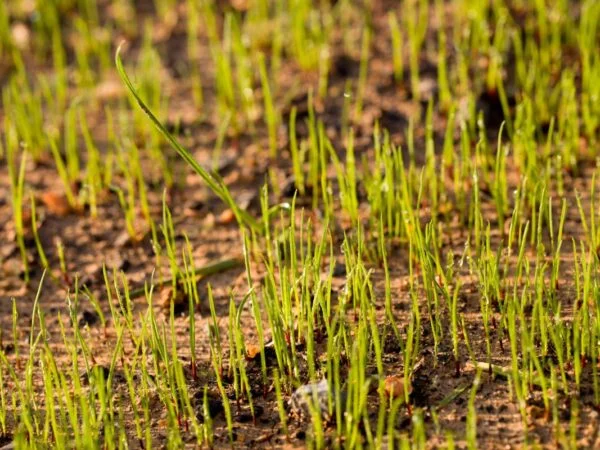Curious if planting grass seed in the rain is a good idea? While it may seem counterintuitive, there are both benefits and drawbacks to consider in a bit. Rain can provide natural watering for seeds but may also lead to runoff and uneven distribution. Timing is crucial - planting during light rain can be advantageous, while heavy downpours may wash away seeds. Understanding the balance between moisture absorption and oversaturation is key to successful germination. By weighing these factors, you can determine whether rainy conditions are favorable for your grass seed planting endeavor.
Key Takeaways
- Timing Matters: Planting grass seeds in the rain can be beneficial, but timing is crucial for successful germination.
- Choose Wisely: Select seeds that are suitable for your specific climate and soil conditions to ensure optimal growth.
- Prepare the Soil: Adequately prepare the soil by removing debris, loosening the top layer, and adding nutrients to create a favorable environment for seed growth.
- Proper Seeding Techniques: Follow recommended seeding techniques such as evenly spreading the seeds, lightly covering them with soil, and gently watering to promote germination.
- Monitor Weather Conditions: Stay informed about the weather forecast to anticipate rain patterns and adjust your planting schedule accordingly.
- Consistent Watering: Implement a consistent watering schedule post-planting to keep the soil moist but not waterlogged, aiding in seed germination and growth.
- Protective Measures: Take steps to protect newly planted seeds from birds, excessive runoff, or erosion to enhance their chances of successful germination.
- Optimize Germination: Maximize germination rates by providing adequate moisture, sunlight, and protection during the crucial initial growth phase.
- Post-Planting Care: After germination, maintain proper lawn care practices like mowing at the correct height and fertilizing appropriately to nurture healthy grass growth.
Understanding Rain Planting
Benefits
Planting grass seed in the rain can significantly benefit your lawn by providing optimal conditions for germination. Rainwater helps moisten the soil, creating a conducive environment for seeds to sprout. This natural watering process reduces the need for manual irrigation, saving time and effort.
Rainfall aids in seed germination by softening the seed coat, allowing moisture to penetrate and kickstart growth. The consistent moisture from rain promotes robust root development, leading to healthier and more resilient grass plants. Utilizing rainy weather for seeding is not only convenient but also cost-effective, as it reduces water usage and associated expenses.
Challenges
While planting grass seed in the rain offers benefits, there are potential challenges to consider. Excessive rainfall can lead to waterlogging, where the soil becomes oversaturated with water, hindering seed germination and root growth. Addressing issues like poor drainage is crucial to prevent waterlogging and ensure successful seeding.
Another challenge of planting grass seed in rainy conditions is runoff, where heavy rains wash away seeds before they have a chance to establish roots. To mitigate this risk of seeds being washed away by heavy rain, consider using erosion control measures such as mulching or installing barriers to protect newly planted seeds.
Preparing for challenges associated with planting grass seed in rainy weather involves monitoring weather forecasts closely and adjusting seeding schedules accordingly. By being proactive in addressing potential obstacles like waterlogging, heavy rain, and runoff, you can increase the chances of successful seed establishment and achieve a lush green lawn.
Selecting Seeds
Grass Types
When planting new seedlings in the rain, it's crucial to choose the right seed variety. Different grass types exhibit varying levels of tolerance to wet conditions, including heavy rain. Some species like Kentucky bluegrass and fescue are known for their resilience in rainy environments. These grasses can establish well even during wet periods, ensuring successful growth.
To ensure optimal results, consider the specific characteristics of each grass type before making a selection. For instance, Kentucky bluegrass is ideal for areas with moderate temperatures and consistent rainfall. On the other hand, fescue thrives in regions with cooler climates and ample moisture. By understanding these distinctions, you can pick a grass type that aligns with your local climate and soil conditions.
Climate Considerations
When deciding whether to plant seeds in the rain, it's essential to evaluate your region's climate dynamics. The success of rainy seeding depends on factors such as temperature variations and humidity levels. Warmer regions may experience faster germination rates due to increased warmth and moisture retention in the soil.
In contrast, cooler climates might require more time for seed establishment due to lower temperatures slowing down the growth process. By analyzing these climate considerations, you can anticipate how different weather patterns impact seed germination during rainy planting sessions. Plan your seeding activities based on historical weather data to maximize growth potential.
Soil Preparation
Testing pH
Testing soil pH is crucial before planting grass seeds in rainy conditions. Understanding the soil's acidity or alkalinity helps determine the suitability for seed growth. Conducting a pH test allows you to adjust the ground conditions for optimal germination and establishment of the grass.
Grass seed growth can be significantly influenced by pH levels in the soil. Different types of grass thrive in specific pH ranges, so testing ensures you choose the right variety for your ground. By knowing the soil's pH, you can make informed decisions on seed selection and necessary amendments to create an ideal environment for growth.
To conduct a pH test, start by collecting soil samples from various areas of your garden or lawn. Use a testing kit to analyze the samples and determine their acidity or alkalinity levels accurately. Based on the results, you can take appropriate steps such as adding lime to raise pH or sulfur to lower it, ensuring favorable conditions for successful seeding.
Enhancing Drainage
Improving soil drainage is essential when planting grass seeds during rainy weather. To prevent waterlogging that hinders seed germination, consider enhancing natural drainage through sloping or creating artificial drainage systems like trenches or French drains. Proper drainage ensures excess water flows away efficiently post-seeding.
Preventing water stagnation is key to successful seeding in rainy conditions. By enhancing drainage, you avoid issues like root rot and fungal diseases caused by overly wet soil environments. Ensuring adequate water flow also promotes healthy root development and overall plant growth once the seeds have been sown.
Seeding Techniques
Timing Tips
Determining the ideal timing for planting grass seed in rainy weather is crucial. It's essential to choose a time when the rain will benefit the seeded area without causing washout. Following a schedule that aligns with your local rainfall patterns can maximize seed germination and establishment. Considering factors such as seasonal rainfall patterns will help you plan for successful seeding.
Application Methods
Exploring different techniques for applying grass seed during rain is key to achieving optimal results. Understanding the benefits of broadcast seeding or hydroseeding in wet conditions can guide your decision-making process. When choosing between methods, consider factors like your lawn size and specific goals to ensure the most suitable method is selected.
Anticipating Weather
Forecast Checking
Before planting grass seed, monitor weather forecasts diligently to ensure optimal conditions for seeding. Use online tools or apps that provide accurate and up-to-date information on upcoming rain events. By staying informed, you can plan your seeding activities strategically around favorable weather windows.
Adjusting Plans
It's crucial to adapt your seeding plans based on changing weather conditions. Be proactive in having contingency measures ready for unexpected rainfall variations. Stay flexible and be prepared to reschedule seeding activities as needed.
Watering Strategies
Initial Watering
After seeding during rainy weather, manage the watering process carefully to avoid over-saturation. Understand the importance of balancing natural rainwater with supplemental watering for optimal seed germination. Following specific guidelines will help maintain proper moisture levels essential for seed growth.
When it rains after seeding, you need to be mindful of the amount of water your lawn receives. Ensure that the soil doesn't become too soggy, affecting seed development negatively. Monitor the rainfall and adjust any additional watering accordingly to prevent waterlogging.
To promote successful germination, consider light rain as a helpful ally in your grass-growing journey. Keep an eye on how much rain is falling and supplement it with manual watering if necessary. Consistent moisture levels are crucial for seeds to sprout effectively.
Post-Rain Care
Once the rain subsides, shift your focus to post-rain care practices for newly seeded grass areas. Address potential issues such as soil compaction caused by heavy rainfall or wind erosion leading to seed displacement. Implement corrective measures promptly.
Inspect your lawn after heavy rain spells to identify any signs of soil compaction or runoff that may have disturbed the newly planted seeds' environment. Gently loosen compacted soil areas without disrupting the seeds underneath.
Implement aeration techniques if needed post-heavy rainfall to alleviate soil compaction and improve air circulation around the seeds. Regularly check for any signs of standing water or poor drainage that could hinder germination progress.
Protecting Seeds
Erosion Prevention
To shield grass seed from rain, focus on erosion prevention to maintain soil integrity. Implement mulching techniques or use erosion control blankets to safeguard newly seeded areas. By proactively addressing erosion, you can prevent seed loss and ensure successful germination.
Explore various options for erosion control, such as strategically placing mulch layers or utilizing biodegradable erosion control blankets. These methods effectively shield seeds from the impact of heavy rain and minimize the risk of washout. Preventing soil erosion is crucial for nurturing healthy grass growth in rainy conditions.
Covering Options
When planting grass seed in rainy weather, consider using covers or shelters to provide additional protection against excessive moisture. Temporary solutions like plastic sheets or row covers can offer a barrier against heavy rainfall while allowing essential air circulation for optimal seed growth. Shielding the seeds from extreme wetness is key to promoting successful germination during rainy periods.
Germination Maximization
Ideal Conditions
To maximize germination when planting grass seed in the rain, aim for optimal conditions. Maintain a balance of moisture, temperature, and sunlight to support seed growth effectively. Create an environment that fosters healthy seed germination and root development.
Establishing ideal conditions is crucial for successful rainy seeding. Ensure the soil is adequately moist but not waterlogged to prevent seeds from rotting. Optimal temperatures between 60-75°F encourage faster germination and growth. Adequate sunlight exposure aids in photosynthesis for strong plant development.
Monitoring Growth
When planting grass seed in the rain, monitoring growth is essential for successful establishment. Establish a routine to track progress in seeded areas regularly. Look out for signs of healthy growth such as vibrant green color and uniform sprouting across the lawn.
Identifying potential issues early on can prevent problems later during seed germination. Monitor closely for signs of overwatering or under-watering, indicated by yellowing or wilting grass blades respectively. Regularly assess seedling development to ensure even growth and coverage across the lawn.
Maintenance Post-Planting
Mowing Guidelines
Newly seeded grass requires careful mowing to ensure healthy growth and development. Understanding the appropriate timing is crucial. Follow specific guidelines on how often you should mow the grass.
Avoid cutting the grass too short, as this can damage young seedlings. It's essential to be mindful of the mowing height, ensuring that you do not trim it too aggressively. Gradually transitioning to a regular mowing schedule will help the grass mature properly.
Fertilization Timing
Determining the right time for fertilizing newly seeded grass in rainy weather is essential for optimal growth. Consider applying fertilizer when the soil is adequately moist from rain. Choose a suitable fertilizer type based on your grass seed variety and follow recommended application rates.
Strategic fertilization practices can significantly enhance seedling growth and development. By providing essential nutrients at the right time, you can boost your new lawn's overall health and resilience.
Final Remarks
You've learned the ins and outs of planting grass seed in the rain. From understanding the process to selecting the right seeds, preparing the soil, and maximizing germination, you're now equipped to tackle this task successfully. Remember to keep an eye on the weather forecast, water your seeds diligently, and protect them from potential threats for optimal results.
Now it's time to put your newfound knowledge into action. Get out there, grab your seeds, and start planting with confidence. With these strategies in mind, you're well on your way to a lush and thriving lawn. Happy planting!
Frequently Asked Questions
Can planting grass seed in the rain be effective?
Yes, planting grass seed in the rain can be effective as it helps to keep the seeds moist for germination. However, heavy rainfall may wash away the seeds, so moderate rain is ideal for successful seeding.
What type of seeds should I select for planting during rainy weather?
Choose quick-germinating grass seed varieties that are suitable for your region and soil type. Opt for high-quality seeds that are resistant to diseases and pests, ensuring better chances of successful growth despite rainy conditions.
How should I prepare the soil before planting grass seed in rainy weather?
Ensure the soil is well-drained to prevent waterlogging. Loosen compacted soil using a rake or tiller to create a conducive environment for seed germination. Adding organic matter like compost can also improve soil structure and fertility.
What seeding techniques work best when planting grass seed in the rain?
For optimal results, use broadcast seeding method by evenly spreading seeds over the prepared area. Lightly rake or roll over the seeded area to ensure good seed-to-soil contact. This technique helps maximize seed coverage and promotes uniform growth.
How can I protect newly planted grass seeds during rainy periods?
Covering the seeded area with straw or mulch can help protect them from heavy rainfall and erosion. Installing temporary barriers like netting or cloth can prevent runoff and keep the seeds in place until they germinate successfully.
Image Source: Paid image from CANVA




